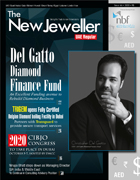
 |
|
| Home Technology / Education Events & News Archives Designs |
|
Gold vs Equities: Que Sera Sera
by Ajay Mathur Historically, gold and equities have had an inverse relationship. Why? It was based on the fact that it was equities that used to attract the majority of mainstream capital inflows from Hedge Funds, Pension Funds, other Institutional entities and so on, and whenever the equity markets did not fare well, some part of the same capital would outflow into gold. Why gold was not so mainstream was primarily because gold did not earn any interest and one had to incur storage, insurance, and other costs, thereby making it a negative-yield asset. As such, it was only when one expected capital appreciation which would provide positive yield that one would look to invest in gold. Since gold has always been a relatively much smaller market than equities, even a smaller proportion of this movement from equities to gold would be large for the gold market, thereby taking gold higher. And the reverse happened when equities performed well. Mind you, most of the times, gold did not actually do anything on its own; it just reacted. However, recently, the relationship between gold and equities has changed to become direct, i.e. the two now move in tandem in the same direction. Why? In the last two decades, gold has become relatively more mainstream due to a consistent rise in gold prices, which in turn is a result of several factors such as consistent prevalence of fear factor worldwide (gold’s safe haven role); emergence of investment vehicles in gold such as ETF’s; trust deficit in fiat currencies (specifically US Dollar); increased Central Bank buying mainly due to geo-political tensions and to support their currencies with a higher proportion of gold (in physical form); and so on. These factors have changed the mindset of the investment community and gold now finds a permanent place in their portfolios, and its proportion in increasing. In the past, investors used to invest 5% or less of the portfolio in gold and hope that gold does not do well, as that would mean the remaining 95% was performing well. But not anymore. With gold now finding a permanent and higher place in investment portfolios, coupled with rising gold prices, it is now subject more and more to the effects of various economic factors and policy decisions, such as interest rates, economic growth, unemployment rate, and so on. These same factors affect the equities markets as well, and therefore, the two have become kind of competitors – for attracting capital. Interestingly, these economic factors have the same effect on both gold and equities, for example, real interest rates. Typically, the lower the real interest rates (interest rates adjusted for inflation), the higher would gold move, and vice versa. This is because of the lower opportunity cost in lost income – since gold is a negative yield asset per se, the lower the interest rate, the lower would be the relative loss on yield. At the same time, the lower real interest rates would encourage more bond issuance and be positive for equities as well. The same can be said for the effects of stimulus money released by various economies, which currently is supporting both equities and gold. However, would the situation remain the same should the fundamentals change? For example, what may happen to the safe haven aspect of gold when the world finds a way to deal with COVID; when there is not so much of doom & gloom the world over due to trade or political wars; if the stimulus money finds its way to the channels aimed at by policy-makers and economies start growing (reduced unemployment, rising income levels); and so on? It is indeed unfortunate that the world is so much in mess today – the more the mess, the better it is for gold. The more the peace and growth, the better it is for equities. The choice is clear, but the path is long and arduous, though the objective achievable. Whatever will be will be; the future is not ours to see; que sera sera. Courtesy Gulf News Dubai UAE  Ajay Mathur Senior Banker, Regulator, and Precious Metals Specialist based in Dubai Ajay Mathur, a Canadian citizen of Indian origin, is a career banker (Corporate Banking / Global Markets professional) with specialization in precious metals, and a regulator. He has worked in markets of Canada (Toronto), the UAE (Dubai), and India (Delhi) with institutions such as HSBC Bank, Standard Chartered Bank, Scotia Mocatta, and Royal Bank of Canada. Currently based in Dubai, Ajay’s last employment was with DMCC and he was also a member on the Board of Dubai Gold & Jewelry Group. He has worked closely with institutions like OECD and World Gold Council and served as a member on the Committee that drafted India’s Responsible Sourcing guidelines. Ajay’s speech (kick-off intervention) at OECD’s 13th Plenary session in Paris in Nov 2019 on the topic “Role of Commodity Trading Hubs for Enhancing Transparency in Commodity Trading” was very well received. Ajay has been a speaker at several Precious Metals conferences and webinars in India and the Middle East from 2017 to 2020. He also conceived and moderated a highly successful series of two webinars in May 2020 on “The impact of Covid-19 on Precious Metals Markets and Way Forward”. Ajay can be contacted at reejay@gmail.com and his Twitter handle is @Trier007.
|